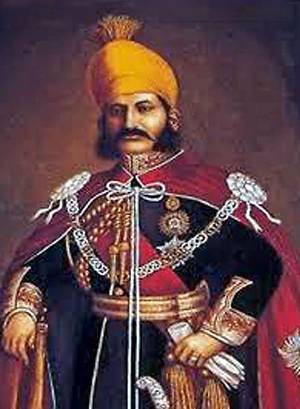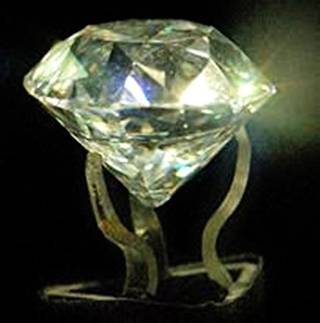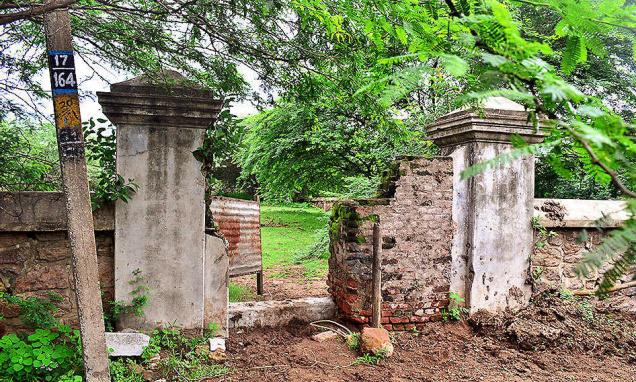Hyderabad, TELANGANA (formerly ANDHRA PRADESH ) :

Mir Mahboob Ali Khan was taken to court by the trader who sold him the huge Jacob diamond
Of all the Nizams who ruled Hyderabad ,Mir Mahaboob Ali Khan — the sixth Nizam — was the most delightful and pleasure-loving monarch. He had great liking for everything western, be it dress, cars, manners and habits.
Born in 1866, he came to the throne at the age of three after the death of his father Afzal ud Daulah, and ruled till 1911. Mahaboob Ali kept the most lavish court in Hyderabad that several native rulers in India tried to emulate. He had a passion for expensive jewellery and precious diamonds. A number of exquisite pieces of jewellery including that of the famed necklace of Mary Antoinette of France, found place in his prized collections. However, the most renowned in his collection was the Jacob diamond, said to be the fifth biggest in the world.
Victoria Diamond
Originally known as Victoria Diamond, Jacob diamond had a short, but eventful, history before reaching Hyderabad. It was found in Kimberly mines in South Africa in 1884 and was secretly transported to England to avoid heavy duties then in place for raw diamonds. It was sold to a consortium of jewellers at the Hutton Garden diamond market in London. The gem was then sent to Amsterdam in 1887 where it was polished in a specially erected workshop. The finished gem, with 58 facets, weighing 185. 75 carats was stunningly beautiful, in its cut, clarity and colour. (Kohinoor weighed only 105.6 carats).
It was this Victoria diamond, also called Imperial diamond that Alexander Jacob, the Shimla-based diamond dealer, sold to Mahaboob Ali Khan, the Nizam of Hyderabad in 1891. Since then it came to be called, Jacob Diamond.
Deal Went Murky
Like many famous diamonds of the world, Jacob diamond too had its own tale of woes due to the shady deal in its sale by Jacob to the Nizam. Jacob was a well-known, but notorious, Jewish merchant dealing in antiques and jewels having a shop in Shimla. Quite aware of Mahaboob Ali Pasha’s obsession for diamonds, Jacob arrived in Hyderabad in early 1891 to sell the Victoria diamond that was still in London. Jacob met the Nizam through Albert Abid, Nizam’s trusted Chamberlin, himself a jeweller and like Jacob, a Jew.
Jacob, with his alluring eloquence, spoke of the fabulous Victoria diamond and showed its glass replica that he had got made. Finally, after negotiations, both agreed for a mutual price of ₹46 lakhs. Half of the agreed amount, ₹ 23 lakhs, was paid as advance immediately by depositing in the bank and the remaining amount was to be paid on delivery of the diamond.
_______________________________________________
- Czar Nicholas II, the last Emperor of Russia, was a guest of Mahboob Ali Khan in Hyderabad. Nicholas, as the Grand Duke of Russia, visited Hyderabad in 1892, two years before he succeeded his father as Emperor of Russia. The Duke stayed at the Falaknuma Palace along with other Russian officials accompanying him. The Nizam exhibited his famed jewel collection for the Russian Prince at a specially erected grand pavilion at the Chowmahalla Palace. Nicholas went on a hunting expedition in the Nekkonda forests near Warangal. A number of sports events were also organised at the magnificent Mahaboob Mansion in Malakpet for the visiting Prince and his entourage.
- Much later, in the wake of Bolshevik Revolution that broke out in Russia, Czar Nicholas II was executed with family in July 1917
_________________________________________________
It was Jacob’s suggestion that the Nizam would use it as a paper-weight on his official papers and that his image would go up with such a use.
On July 21, 1891, when Jacob came with the original diamond, the Nizam to his disappointment found the diamond was much smaller than what the model was. Therefore he refused to buy the diamond and Jacob was asked to return the money paid as advance. But the wily Jacob by then, contrary to the understanding, had withdrawn all the advance money from the bank.
Jacob insisted that the Nizam pay him the remaining amount, and went so far as to file a case in the High Court in Calcutta. During the trial, the Calcutta High Court wanted to interrogate the Nizam as a witness. Accordingly, the Nizam met the commission at the Residency on October 5, 1891 but felt it an insult to go before a Commission of enquiry. On returning from the Residency, the angry Nizam, wrapped Jacob Diamond in a piece of cloth that was used to wipe the nib of his pen, pushed it into a shoe, and staved it off in his table draw, vowing never to open.
His son and successor, Mir Osman Ali Khan who succeeded his father in 1911, discovered it and used as paper weight, the purpose for which his father bought it.
What happened to Jacob?
The case Jacob filed proved to be his nemesis for, he had to spend all his money on his advocates. Born in Armenia , to Jewish parents, Alexander Malcolm Jacob was an ambitious and unscrupulous person. He came to India in 1871 with nothing and grew enormously influential as a dealer in jewels, diamonds and antiques. After his relations with the Nizam were strained, other native rulers treated him like the plague and refused seeing him. Jacob ultimately died in penury in Bombay. His life served a model for India-born Rudyard Kipling, to create the character, Lurgan in his Nobel prize winning novel, Kim, published in 1901.
source: http://www.thehindu.com / The Hindu / Home> Society> History & Culture / by K S S Seshan / February 21st, 2018










